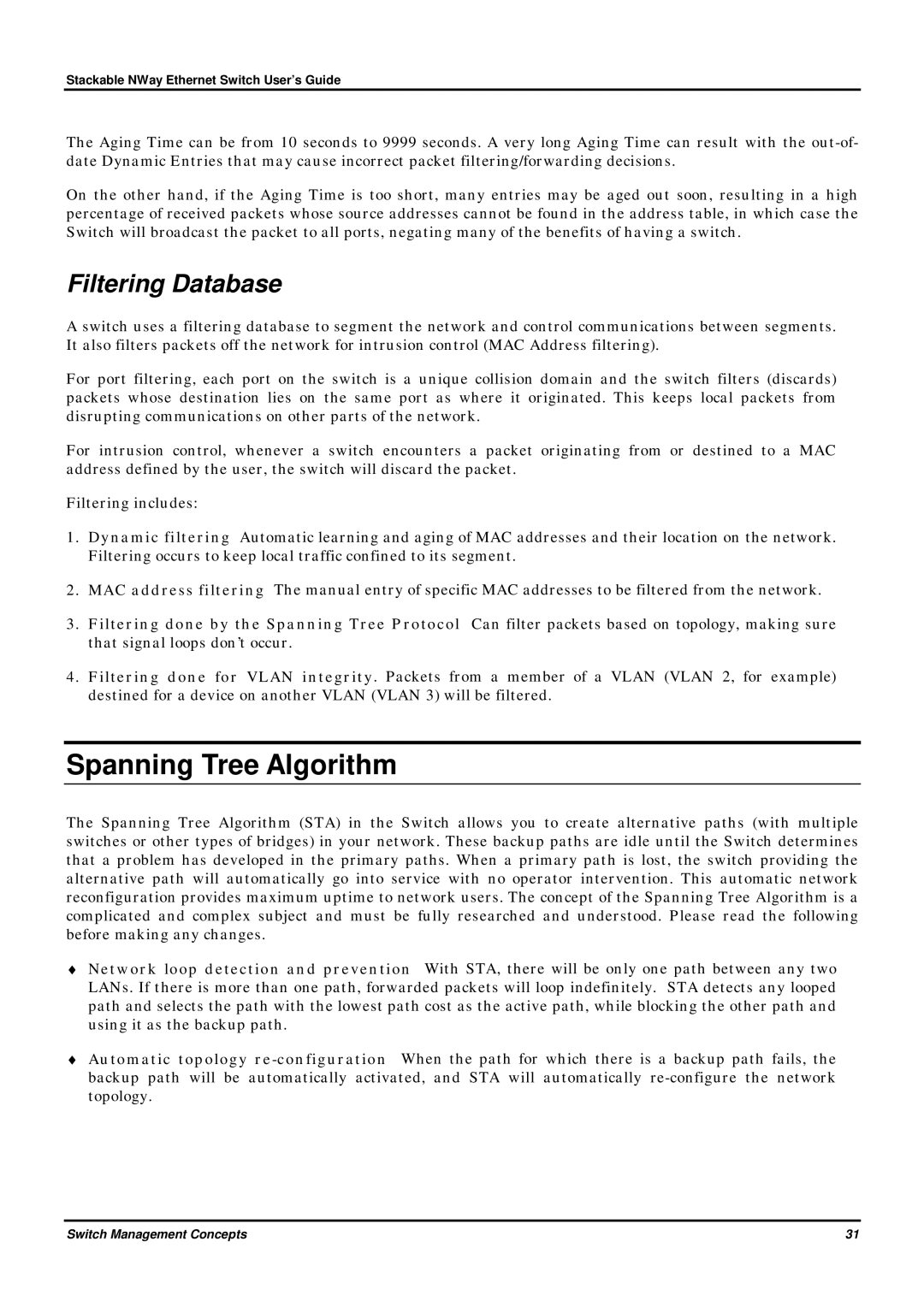
Stackable NWay Ethernet Switch User’s Guide
The Aging Time can be from 10 seconds to 9999 seconds. A very long Aging Time can result with the
On the other hand, if the Aging Time is too short, many entries may be aged out soon, resulting in a high percentage of received packets whose source addresses cannot be found in the address table, in which case the Switch will broadcast the packet to all ports, negating many of the benefits of having a switch.
Filtering Database
A switch uses a filtering database to segment the network and control communications between segments. It also filters packets off the network for intrusion control (MAC Address filtering).
For port filtering, each port on the switch is a unique collision domain and the switch filters (discards) packets whose destination lies on the same port as where it originated. This keeps local packets from disrupting communications on other parts of the network.
For intrusion control, whenever a switch encounters a packet originating from or destined to a MAC address defined by the user, the switch will discard the packet.
Filtering includes:
1.Dynamic filtering Automatic learning and aging of MAC addresses and their location on the network. Filtering occurs to keep local traffic confined to its segment.
2.MAC address filtering The manual entry of specific MAC addresses to be filtered from the network.
3.Filtering done by the Spanning Tree Protocol Can filter packets based on topology, making sure that signal loops don’t occur.
4.Filtering done for VLAN integrity. Packets from a member of a VLAN (VLAN 2, for example) destined for a device on another VLAN (VLAN 3) will be filtered.
Spanning Tree Algorithm
The Spanning Tree Algorithm (STA) in the Switch allows you to create alternative paths (with multiple switches or other types of bridges) in your network. These backup paths are idle until the Switch determines that a problem has developed in the primary paths. When a primary path is lost, the switch providing the alternative path will automatically go into service with no operator intervention. This automatic network reconfiguration provides maximum uptime to network users. The concept of the Spanning Tree Algorithm is a complicated and complex subject and must be fully researched and understood. Please read the following before making any changes.
♦Network loop detection and prevention With STA, there will be only one path between any two LANs. If there is more than one path, forwarded packets will loop indefinitely. STA detects any looped path and selects the path with the lowest path cost as the active path, while blocking the other path and using it as the backup path.
♦Automatic topology
Switch Management Concepts | 31 |
